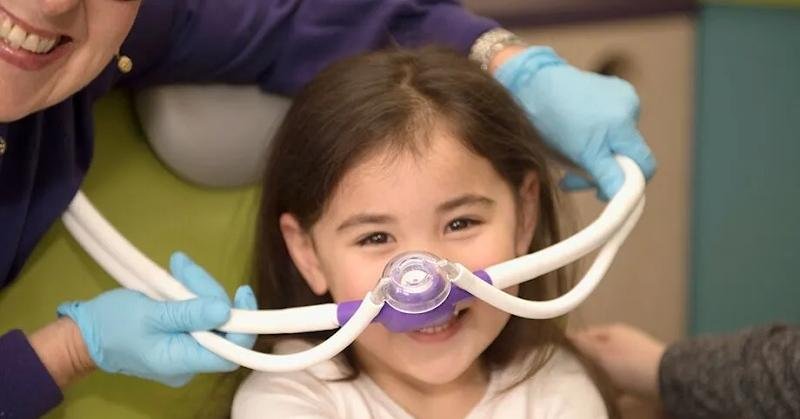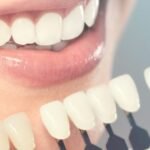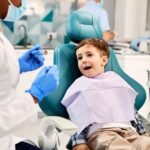Laughing gas, or nitrous oxide, is often used to ease anxiety and discomfort during dental procedures, especially for children. Its safety for kids raises important questions as parents seek effective ways to manage their fears. Understanding the potential risks and benefits of laughing gas for kids becomes crucial in making informed decisions. This article explores its safety, effects, and what parents should consider before opting for this option.
Overview of Laughing Gas
Laughing gas, medically known as nitrous oxide, serves as a common sedative in dental practices, especially for children undergoing procedures. It provides a calming effect, helping to reduce anxiety and discomfort without fully sedating the patient. Nitrous oxide works quickly, taking effect within minutes and dissipating rapidly after the procedure, allowing children to return to normal activities shortly after.
Laughing gas functions by inhibiting pain signals and inducing a sense of euphoria. While it is deemed safe when administered by qualified professionals, considerations regarding its use should be addressed. Potential side effects may include nausea, vomiting, and headaches; however, these occurrences are rare when administered correctly. Most children tolerate nitrous oxide well, contributing to a more relaxed and efficient dental experience.
Parents should consult with their child’s dentist to determine if laughing gas is suitable for their child. Factors such as the child’s medical history, anxiety levels, and the type of procedure can influence this decision. While nitrous oxide is generally safe for children, understanding its benefits and risks is crucial in making an informed choice about its use in a clinical setting.
Medical Uses of Laughing Gas
Laughing gas, or nitrous oxide, serves multiple medical purposes, particularly in dentistry and emergency medicine. Its efficacy and safety make it a valuable tool in various medical settings.
Role in Dentistry
In dentistry, laughing gas plays a crucial role as a sedative. It helps alleviate anxiety and discomfort during procedures, allowing children to undergo treatments with minimal stress. The gas induces a state of relaxation, enabling dentists to perform necessary work without significant interruptions. Nitrous oxide’s quick onset and rapid recovery mean children can return to normal activities shortly after treatment. Qualified dental professionals monitor its administration closely to ensure safety and adjust dosages based on individual needs.
Role in Emergency Medicine
In emergency medicine, laughing gas provides effective analgesia and sedation. It allows healthcare providers to manage pain and anxiety during urgent procedures. For instance, in situations requiring rapid treatment, nitrous oxide can be administered swiftly, providing immediate relief. This property is especially beneficial for children who may find emergency situations overwhelming. Its ability to inhibit pain signals while inducing euphoria enhances the overall treatment experience, making it a valuable asset in high-pressure medical environments.
Safety Considerations
Understanding safety considerations is vital when assessing the use of laughing gas for children. Although typically safe under professional guidance, potential risks and individual factors must be evaluated.
Potential Risks
Laughing gas can pose several potential risks, although these are infrequent. Side effects may include nausea, vomiting, dizziness, and headaches. In rare cases, children may experience allergic reactions or complications related to pre-existing respiratory conditions. Monitoring during and after administration is crucial to ensure children’s safety and address any adverse reactions promptly.
Age Factors
Age significantly influences the safety and effects of laughing gas. Younger children often require lower doses to achieve desired sedation levels. Dentists assess age, weight, and overall health when considering nitrous oxide for a child. It’s essential to communicate any medical concerns or previous reactions to anaesthesia before a procedure, enabling tailored treatment for each child.
Parental Concerns
Parents often express concerns regarding the use of laughing gas for children during dental procedures. It’s essential to address these concerns with accurate information about safety, effectiveness, and potential side effects.
Common Misconceptions
Many parents believe laughing gas poses significant risks to their children. Contrary to this belief, nitrous oxide, when administered by trained professionals, is considered safe for use in paediatric dentistry. Some may confuse laughing gas with general anaesthesia, which carries more risks. Laughing gas allows children to remain awake and respond to instructions while experiencing reduced anxiety. Concern regarding long-term effects is often raised, yet research indicates that short-term exposure for dental procedures does not lead to lasting health issues.
Expert Opinions
Dental professionals generally support the use of laughing gas for children, citing its effectiveness in reducing anxiety and discomfort during procedures. The American Academy of Paediatric Dentistry endorses nitrous oxide as a safe sedation option for children, especially when administered with proper monitoring. Surgeons and anaesthetists highlight that nitrous oxide’s rapid onset and recovery make it particularly suitable for children, providing immediate relief while minimising complications. These expert opinions reinforce its status as a viable option for dental care, alleviating parental concerns when used according to established guidelines.
Conclusion
Laughing gas can be a safe and effective option for children undergoing dental procedures when administered by qualified professionals. Its ability to reduce anxiety and discomfort makes it a valuable tool in paediatric dentistry. Parents must consider their child’s individual needs and medical history before making a decision.
While side effects are rare and typically mild, open communication with the child’s dentist is essential. Understanding the potential risks and benefits allows parents to make informed choices about their child’s care. By prioritising safety and proper monitoring, laughing gas can enhance the dental experience for young patients, ensuring they receive the necessary treatment with minimal stress.










